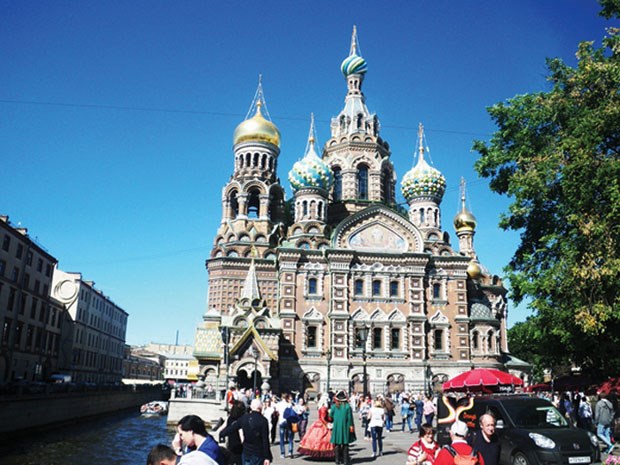Cruising aboard HAL’s Eurodam familiarizes us with captivating Baltic ports.
Of them all, St Petersburg stands out. There, ship’s excursions prove perfect for first time visitors like us. With the need for costly visas eliminated and transportation simplified, two sightseeing days are filled to the max. Local guide Tanya introduces her storied city.
Named for his patron saint, Apostle Peter, Tsar Peter founded St Petersburg in 1703. This new capital provided crucial Baltic access and prospered, despite frigid winters. Nowadays, icebreakers keep the port open year round.
Our tour reveals a dizzying kaleidoscope of legendary city sights. French-inspired architecture tags this city as “Paris of the East.” An enormous equestrian statue memorializes Tsar Peter while nearby Decembrists’ Square recalls an 1825 revolt. Massive red granite columns support St Isaac’s, a Russian Orthodox cathedral designed to accommodate 14,000 standing worshippers.
Driving through old neighbourhoods and on into the countryside, we reach World Heritage Peterhof, Tsar Peter’s summer palace.
“Starting as a small family residence, this royal complex eventually encompassed these auxiliary buildings, upper and lower parks, several palaces and even a forest,” Tanya explains.
Tsar Peter designed Peterhof’s first 30 rooms in 1714. Daughter Elizabeth and grandson’s wife Catherine the Great expanded his efforts.
From the front terrace, we gaze over the Grand Cascade. This magnificent creation incorporates 64 fountains, 200 gilded statues, bas-reliefs and other ornamentation. Amid its central pond, Rastrelli’s golden Samson wrestles a lion.
Aboard a hydrofoil, we’re back in the city within 30 minutes. Swimmers bask along the beach where Tsar Peter first established his defense fortress against the Swedes. Gold-spires soaring, Peter and Paul Cathedral entomb Russian royalty from Peter the Great to Alexander III. Disembarking along the Palace Embankment, we behold Catherine’s fabled Winter Palace.
Visiting Resurrection of Christ Church concludes this day.
Onion domes sparkle with blue, yellow and green glazed decorative tiles, two in gold.
Inside, 7,500 square metres of glorious mosaics drench walls and ceilings with brilliant, almost overpowering colour. Breathtaking motifs frame radiant biblical scenes and figures. Shimmering in gold, silver and coloured enamels, Holy Gates enclose the main altar.
Wondrous artworks fill our second day. One of the world’s oldest museums, The Hermitage houses three million pieces of art in the Winter Palace and four other buildings.
A marble spectacle in itself, the 18th-century Jordan Staircase leads upward to a lavish second floor ballroom.
Following her husband’s death, Catherine the Great met eligible bachelors in the smaller Pavilion Hall. There, the bedazzling Peacock Clock, a magnificent gift from one such suitor, still works.
Over 100 grand halls and rooms exhibit 13th to 20th century European art.
Among many marble sculptures, we spot Voltaire, eyes a-twinkle. Catherine, we learn, commissioned Houdon to create this likeness of the French philosopher, her beloved friend and correspondent.
Another gallery encloses Tsar Peter’s original Rembrandts, collected while studying shipbuilding in Holland.
Adjoining rooms contain Catherine’s extensive masterpiece collections by da Vinci, Raphael and Goya.
Paintings by Degas, Renoir, Monet, Cezanne, Gauguin and Matisse form the largest collection of French art outside France.
Travel Writers’ Tales is an independent travel article syndicate.



